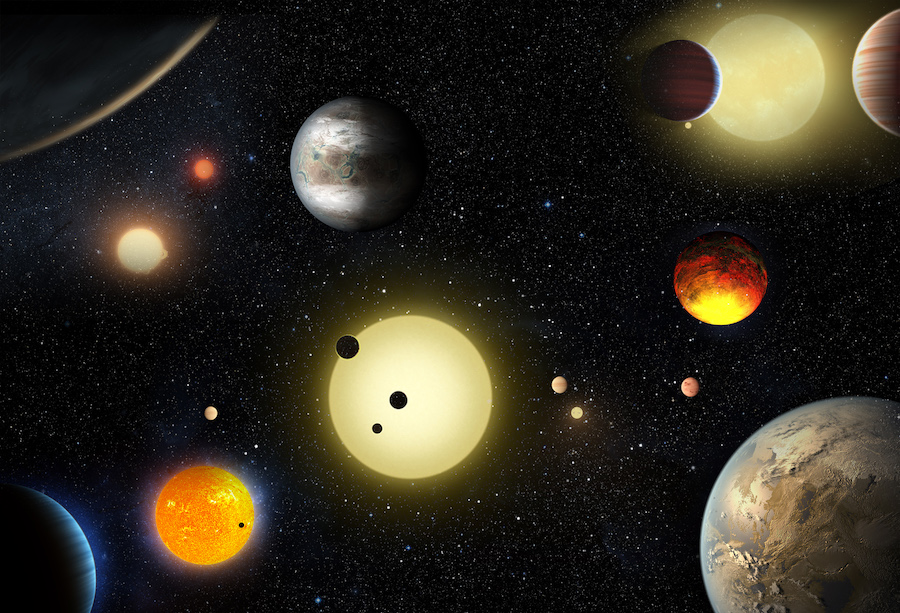
For several years now the Kepler Space Telescope, as well as other telescopes, has been discovering an increasing number of exoplanets, with over 2,000 such confirmed worlds found so far (and nearly 5,000 candidates). Today, NASA announced that the Kepler mission has added 1,284 newly confirmed exoplanets to that list, vastly increasing the number of known planets orbiting other stars. This is the largest number of new planets ever announced at one time. The new results were announced during a NASA teleconference briefing.
The new tally more than doubles the number of confirmed planets found by Kepler to date.
“This announcement more than doubles the number of confirmed planets from Kepler,” said Ellen Stofan, chief scientist at NASA Headquarters in Washington. “This gives us hope that somewhere out there, around a star much like ours, we can eventually discover another Earth.”
The findings have been published today in The Astrophysical Journal.
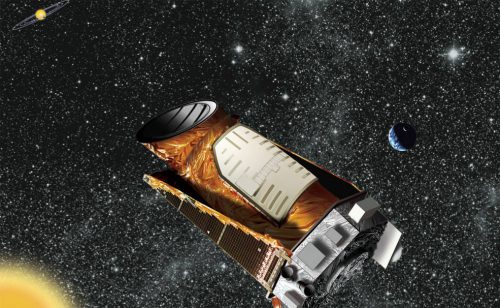
The new discoveries are based on analysis of the July 2015 catalog of Kepler planetary candidates, which contains a total of 4,302 planetary candidates. Of those, 1,284 were confirmed, with a probability of greater than 99 percent of being actual planets. There are also 1,327 additional candidates which are likely to be confirmed as well, but still require further study. Another 707 candidates are thought to be false positives, caused by other stellar phenomena such as companion stars or brown dwarfs.
The numbers are impressive, and by extrapolating them to the rest of the galaxy, astronomers now calculate that there are billions of planets in our galaxy alone. There may even be more planets than stars. Kepler, by design, only looks at a very small patch of the sky between the constellations Lyra and Cygnus. It is a tiny fraction of all of the stars in the galaxy, but representative of those types of stars.
According to Paul Hertz, Astrophysics Division director at NASA Headquarters: “Before the Kepler space telescope launched, we did not know whether exoplanets were rare or common in the galaxy. Thanks to Kepler and the research community, we now know there could be more planets than stars. This knowledge informs the future missions that are needed to take us ever-closer to finding out whether we are alone in the universe.”
The findings are also based on a new statistical analysis method which can be applied to many planet candidates simultaneously. Each individual planetary candidate was given a planet-hood probability percentage. This is the first time such a method was used on so many candidates at once; previous techniques tended to focus on sub-groups within the overall list of planetary candidates.
“Planet candidates can be thought of like bread crumbs,” said Timothy Morton, an associate research scholar at Princeton University. “If you drop a few large crumbs on the floor, you can pick them up one by one. But, if you spill a whole bag of tiny crumbs, you’re going to need a broom. This statistical analysis is our broom.”
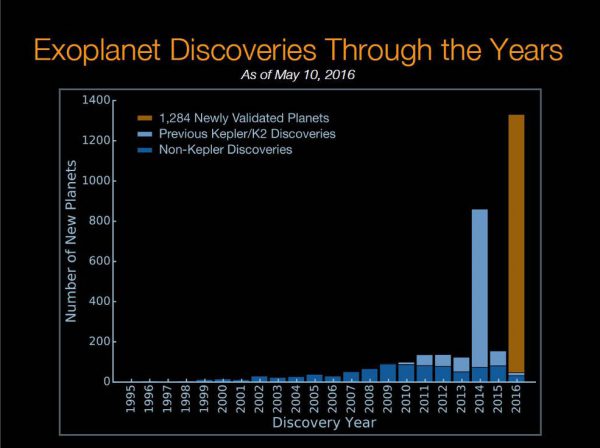
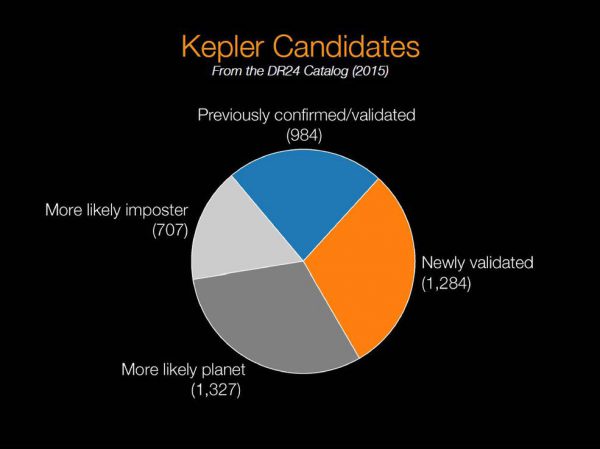
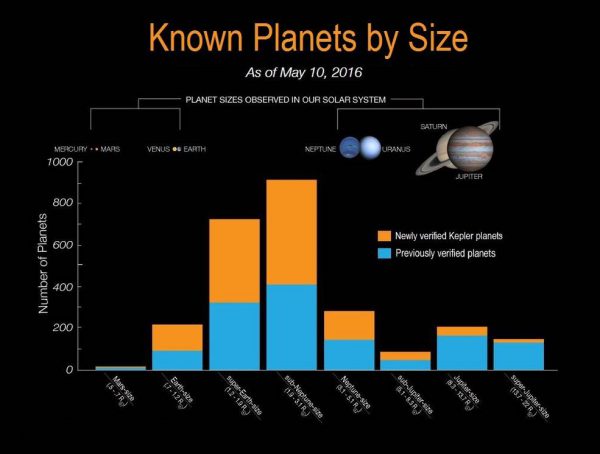
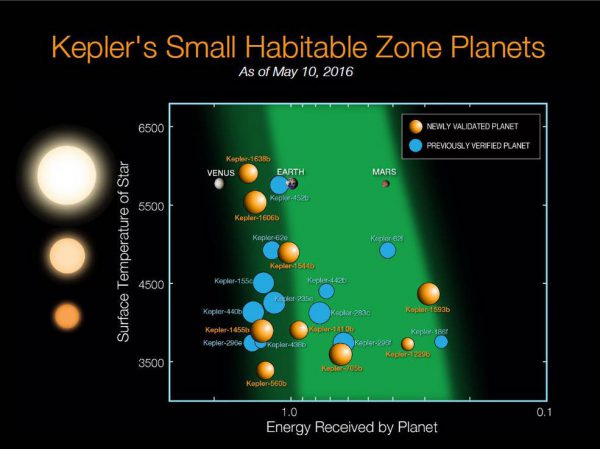
Of course, a question many people have is how many of those planets could be potentially similar to Earth. In this new batch of confirmed planets, 550 could be rocky worlds, with nine of them orbiting in their stars’ habitable zones, where temperatures might allow liquid water to exist on their surfaces. Little is known, however, about the actual conditions on any of these worlds, but just the fact that many such smaller rocky planets continue to be discovered is exciting. Some of those smaller worlds are called “super-Earths,” such as Kepler-452b, which are larger than Earth but smaller than Neptune or Uranus in our Solar System. But now even planets the size of Earth or smaller are starting to be discovered as well.
“They say not to count our chickens before they’re hatched, but that’s exactly what these results allow us to do based on probabilities that each egg (candidate) will hatch into a chick (bona fide planet),” said Natalie Batalha, a co-author of the new paper and the Kepler mission scientist at NASA’s Ames Research Center. “This work will help Kepler reach its full potential by yielding a deeper understanding of the number of stars that harbor potentially habitable, Earth-size planets – a number that’s needed to design future missions to search for habitable environments and living worlds.”
So as of now, Kepler has found 4,696 planetary candidates in its primary mission, of which 2,325 have been confirmed, and 21 are smaller rocky planets, less than twice the size of Earth, in the habitable zones of their stars. In the subsequent modified K2 mission, which began after problems with the telescope’s reaction wheels caused an end to the primary mission, an additional 270 candidates have been discovered, with 46 of those confirmed so far. Counting other telescopes as well as Kepler, over 3,200 exoplanets have now been verified.
Kepler also recently observed the shockwave from a supernova in visible light for the first time ever. Supernovae are the end result of stars more massive than the Sun which reach the ends of their lives and explode. There is also the ongoing controversy of Kepler observations regarding the unusual star KIC 8462852, which appears to have odd dimming events where up to 22 percent of the star can be dimmed at one time. Theories have run the gamut from huge swarms of comets to alien megastructures.
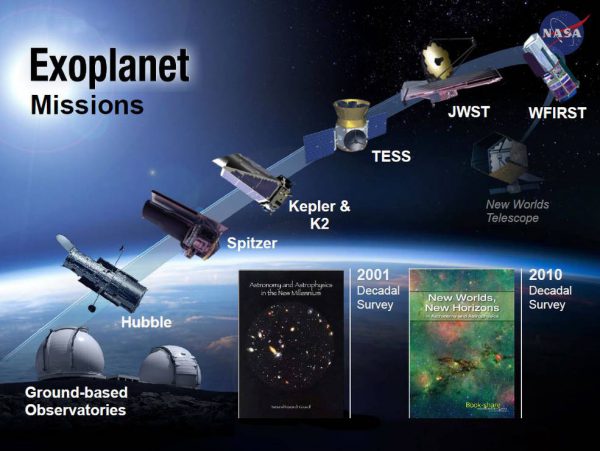
After Kepler, additional space telescopes such as TESS, JWST, and WFIRST will continue the search for more exoplanets in other regions of the galaxy, as well as provide more data on some of the ones already discovered, including mass and atmospheric conditions. Astronomers will be able to analyze the atmospheres of some of these worlds, in particular smaller “super-Earths,” in the search for possible biomarkers—gases which could be possible evidence for life.
The next few years will be important and exciting for exoplanet research. A few decades ago it wasn’t known if any other planets even existed outside of our Solar System, but now they are being discovered by the thousands. Some are massive gas giants like Jupiter and Saturn, while others are smaller gas or ice giants like Uranus and Neptune, and others are smaller rocky worlds like Earth, Venus, Mars, or Mercury. One puzzle is that while super-Earths seem to be fairly common elsewhere, there aren’t any in our own Solar System, unless the possible Planet Nine turns out to be one, as some scientists have theorized.
Kepler and other telescopes, both in space and on the ground, have revolutionized our understanding of planets orbiting other stars, which can also help scientists better understand how our own Solar System originated and evolved. They will also help to perhaps answer one of the biggest questions of all, are we alone in the Universe or do we have company? Only time will tell, but the future looks promising.
Additional images and briefing materials are available here. More information about the Kepler mission is available on its NASA website.
Want to keep up-to-date with all things space? Be sure to “Like” AmericaSpace on Facebook and follow us on Twitter: @AmericaSpace





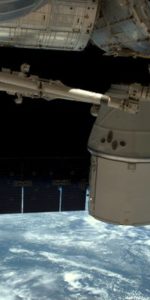
To think that is was only in the 1980’s that humanity was still speculating on the other worlds idea. 26 years later we now have a catalog of exoplanets numbering in the thousands.
And this is only the beginning. Even more discoveries are yet to be made. The study of exoplanets is rapidly becoming a branch of astronomy with profound implications for the human race. Wow!
Yep.
And, closer to home:
“The results peg 2007 OR10 as the largest unnamed world in our solar system and the third largest of the current roster of about half a dozen dwarf planets.”
From: ‘2007 OR10: Largest Unnamed World in the Solar System’ May 11, 2016
At: http://www.nasa.gov/feature/ames/kepler/2007-or10-largest-unnamed-world-in-the-solar-system/
We’ll eventually need a Lunar based industrial revolution to build much bigger and faster human carrying spaceships.
An original nuclear pulse Orion type of spaceship could haul people and supplies across the Solar System.
See:
‘Interstellar Transport’ By Freeman J. Dyson
If someone wants a nuclear pulse Orion to help colonize Mars and Ceres, the Moon is probably the best place to build and launch such an efficient and heavy spaceship.
Maybe no one is really serious yet about colonizing Mars, Ceres, Pluto, and 2007 OR10.
Maybe no one is really interested yet in changing the orbits of comets so that they intersect with the Moon or Mars and create thick Galactic Cosmic Radiation shielding atmospheres on those interesting spheres.
Preparing to actually colonize and terraform worlds is hard.